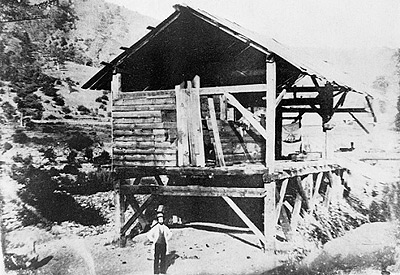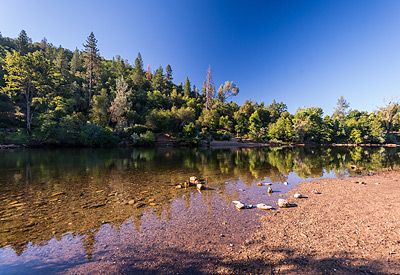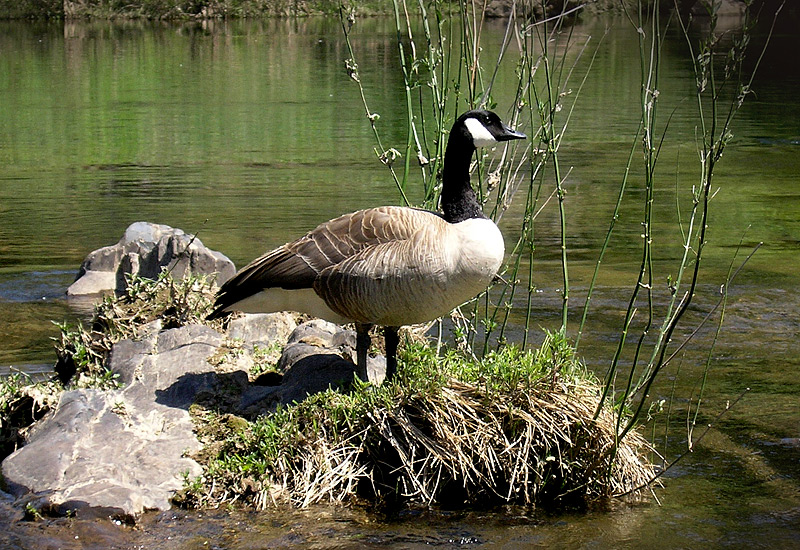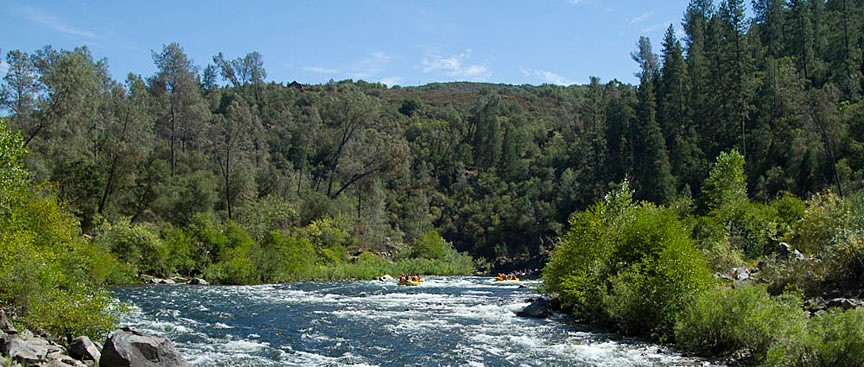American River History
Before settlers arrived, the South Fork of the American River was home to the Nisenan Indians, who lived in the Yuba, Bear, and American river watersheds. It’s obvious why the Nisenan settled in this area, with the beautiful rolling hills, the thriving wildlife, and the awe-inspiring rivers. While the Nisenan have been largely overlooked since the Gold Rush, their heritage is still visible: the city Coloma is even named after the Nisenan word Cullumah, meaning beautiful. Tragically, the Nisenan Indians were pushed out through disease and violence as settlers swarmed California in search of gold.
The Gold Rush
 The South Fork of the American River became famous in 1848 when James Marshall first discovered gold while constructing a mill for John Sutter. This discovery sparked the California Gold Rush of 1849. The promise of wealth brought miners from all over the United States in one of the largest mass migrations in the history of the Western Hemisphere.
The South Fork of the American River became famous in 1848 when James Marshall first discovered gold while constructing a mill for John Sutter. This discovery sparked the California Gold Rush of 1849. The promise of wealth brought miners from all over the United States in one of the largest mass migrations in the history of the Western Hemisphere.
Early miners were immediately successful – the gold was so plentiful that you could walk along the banks of the South Fork of the American and pick it out of the sand. As the gold became more difficult to find, miners used more destructive methods to scour the banks of the river. Hydraulic mining, in particular, was widely used and caused severe pollution through erosion and the use of mercury. These environmentally devastating methods were banned in 1884 and mining has since petered off, but gold can still be found in the river.
In the end, the California Gold Rush produced an estimated 750,000 pounds of gold, which would be worth more than $14 billion in 2014. However, it also left behind devastating environmental effects: more than 7,500 tons of mercury was used in hydraulic mining, causing approximately 13 billion tons of erosion. The environmental effects of the Gold Rush are still visible today, and everything from the trout in the American Rivers to the San Francisco bay and California wetlands has suffered as a result.
A Powerful Struggle
As California’s population grew, so did the demand for power. The popular 21 mile stretch of whitewater is sandwiched between the Folsom Dam, built in 1955, and the Chili Bar Dam, built in 1964. These dams provide power and water to much of northern California, but they also threaten the health of the river.
When a dam is constructed, though, many factors can hurt the surrounding ecosystem. For example, the controlled releases of the water create a relatively consistent water level throughout the summer; this is unnatural for the area, which usually experiences decreased water levels as the summer passes. While it’s easy to assume that consistent water is better, the reality is that many of the plants and animals are adapted to and even require seasonal drought.
While many of these effects are necessary to provide much-needed resources to California residents, the American River Conservancy works hard to protect as much of the South Fork of the American River as possible in hopes to mitigate negative effects.
American River Conservation Efforts
The environment is a resilient thing, and it has bounced back with remarkable success from the extreme stresses of both mining and damming. This rebound has been aided significantly by conservation efforts along the South Fork of the American River, notably by the American River Conservancy (ARC). Since its foundation in 1989, the ARC has worked to buy land to limit development along the riverbanks and create a corridor of environmental conservation for the protection of wildlife biodiversity.
There are currently more than 3,800 acres protected between the Chili Bar Dam and Folsom Lake, which preserve the diverse habitats along the South Fork of the American River and in the Sierra Nevada Foothills. In this swath of conservation, the South Fork American River Project Area is host to approximately 7% of California’s native plant and animal biodiversity. The trout population, which is notoriously sensitive to pollution, is strong in the South Fork of the American River.
 Wildlife along the American River
Wildlife along the American River
The corridor of conserved land along the South Fork of the American River is host to incredible wildlife diversity. The diversity begins with the wide range of habitats along the river, including the Blue Oak Savannah, foothill woodland, and riparian zones between the water, forests, and fields. Common trees include a variety of oaks, the California Buckeye, multiple species of willow, and the White Leaf Manzanita. Brush species such as elderberry shrubs, Himalayan blackberry, and California wild grape are common.
With the variety of terrain and wealth of plant species, there are many habitats which provide homes to animals along the South Fork of the American River corridor. There are 117 bird species alone, including Osprey and the rare Bald Eagle. Common mammals in the area include coyotes, grey fox, and mule deer; some nature enthusiasts might even catch a glimpse of black bear, bobcats, or river otters. Fish and amphibians include the rainbow trout, Sacramento pike minnow, pacific tree frog, and Gilbert’s skink.
Recreational Use Today
The South Fork of the American is famous for more than its gold history or its role in powering California—it’s also one of the most popular destinations for whitewater rafting and kayaking in the State of California! The popular whitewater adventures on the Forks of the American include whitewater for all ages and skill levels, with both relaxing floats and exciting, blood-pumping rapids to choose from. Moreover, the cool temperature of the water guarantees it’s a refreshing place to cool off, no matter how high the temperatures climb in the summer. Whitewater recreation sports are possible all summer long due to the Chili Bar dam, which releases water for recreational and electrical purposes.


